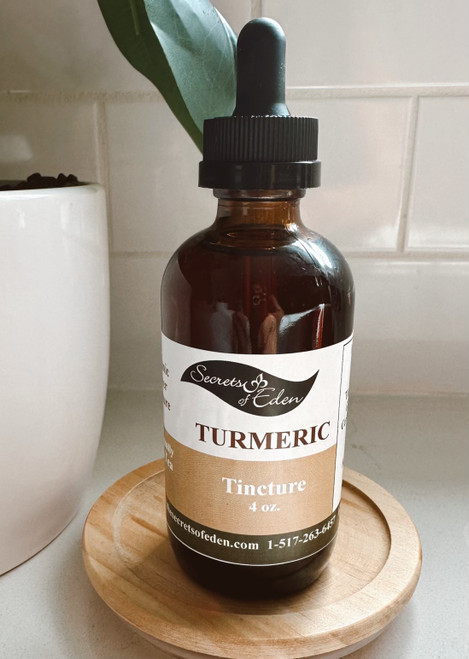Product Overview
Secrets of Eden's
Hibiscus Tincture
One oz.
(Actual Unsolicited Feedback Received from Satisfied Customer)
| "My Daughter's BP dropped from 160/110 to 110/68 in 4 weeks! GREAT STUFF,2nd order!" | Buyer:
beliveinlove ( 570
|
May-04-08 09:02 |
One easy way to lower your blood pressure is to start drinking Hibiscus tea. This tasty colorful tea is popular in many countries as a remedy for high blood pressure. A recent study shows Hibiscus tea not only lowers your blood pressure, but it lowers it fast.
During the study, 54 patients with high blood pressure were given hibiscus tea to drink. All the patients were in their fifties and each had stopped taking their blood pressure medication one week prior to the study. Each patient had their blood pressure read one hour after drinking the Hibiscus tea.
The result: after just 12 days, the patients drinking hibiscus tea averaged an 11.7% drop in systolic pressure and a 10.7% drop in diastolic pressure!
For millions of people, this amount of reduction is enough to get them in the safety zone and completely eliminate the need for medication.
To make a tea - apply 15-30 (full dropper) drops into a hot cup of water.
ONLY $26.95
Hibiscus is used for a variety of ailments partly because there are so many species.
Hibiscus lowers fevers and high blood pressure, increases urination, relieves coughs, and has been found to have antibacterial properties. All parts of the plant are used, from the seeds to the roots. Common hibiscus is used mainly for respiratory problems, but is also widely used for skin disorders or to treat fevers. Rose of Sharon is used externally as an emollient, but is also taken internally for gastrointestinal disorders.
Fever
As a natural febrifuge, Hibiscus contains citric acid which is a natural coolant. In Pakistan and Nepal, it is the flowers that are used as a treatment for fever. Common Hibiscus has been found to be particularly useful for children's fevers.
Respiratory disorders
Common Hibiscus is used to treat coughs by placing extracts from the plant in the patient's bath or in water used for steam inhalations ( which transfers directly to the blood strem). Hibiscus is often combined with other herbs to make a cough syrup. Hibiscus is used widely in Cuba, where the tropical climate contributes to respiratory illnesses, and where hibiscus is readily found.
Hypertensive conditions
Hibiscus and rose of Sharon contain hypotensive compounds that lower the blood pressure. It's ability to lower blood pressure may be due to its diuretic and laxative effects. The plant contains ascorbic and glycolic acid, which increase urination.
Skin conditions
Hibiscus is a natural emollient, used for softening or healing the skin. The leaves and flowers of the roselle are used all around the world for their emollient qualities. When the leaves are heated, they can be placed on cracked feet or on boils and ulcers to promote healing. Since the herb is a cooling herb, when applied externally it cools the surface of the skin by increasing blood flow to the epidermis and dilating the pores of the skin. A lotion made from a decoction of hibiscus leaves can be used to soothe hemorrhoids, sunburn, open sores, and wounds.
Just got a letter from my friend Dr. David Williams
Dear Rick,
You've heard me talk a lot about green and white teas. But there's another tea few Americans know about, despite its reputation around the world. It's called hibiscus tea—and I suspect once word gets out, it will be front-page news. (ed. note: not if Big Pharma has anything to do with "word getting out" LOL )
Hibiscus tea contains powerful antioxidants, including anthocyanins, which help protect your cells from free-radical damage.
But what really caught my attention was its long history of traditional use for promoting cardiovascular health. And now new preliminary evidence is suggesting it can help promote healthy blood pressure as well. For these reasons alone I've added hibiscus to my health regimen, and encourage you to do the same.
For centuries, other cultures have been taking advantage of its healing benefits
Unlike green and white teas, which come from a tea plant called the Camellia sinensis, Hibiscus tea isn't actually a tea at all—it's an herbal infusion. It's made from the bright red hibiscus flowers (Hibiscus sabdariffa) that have been growing in the rich silt of the Nile Valley for centuries.
The Pharaohs of the ancient Nile Valley realized if they took Hibiscus flowers, dried them in the sun, brewed them in boiling water, and let them cool—they could create a refreshing beverage that sustained them in the hot desert heat.
Since that time, people in various cultures have been drinking it for its health benefits, including China, Mexico, and Europe. Even today, in Sudan and Egypt, special occasions like weddings are toasted with hibiscus tea.
Dr. Williams
| This REALLY WORKS ! Last years BP 164/85,after 8 weeks w/Hibiscus 131/64! WOW ! | Repeat Customer | Sep-02-08 09:18 |
Blood Pressure Reducing Tea - Lowering your blood pressure doesn't have to be hard. It doesn't have to mean a lifetime of punishing diets or nasty prescription drugs, with all their side effects.
Order now while supplies last
ONLY $26.95






